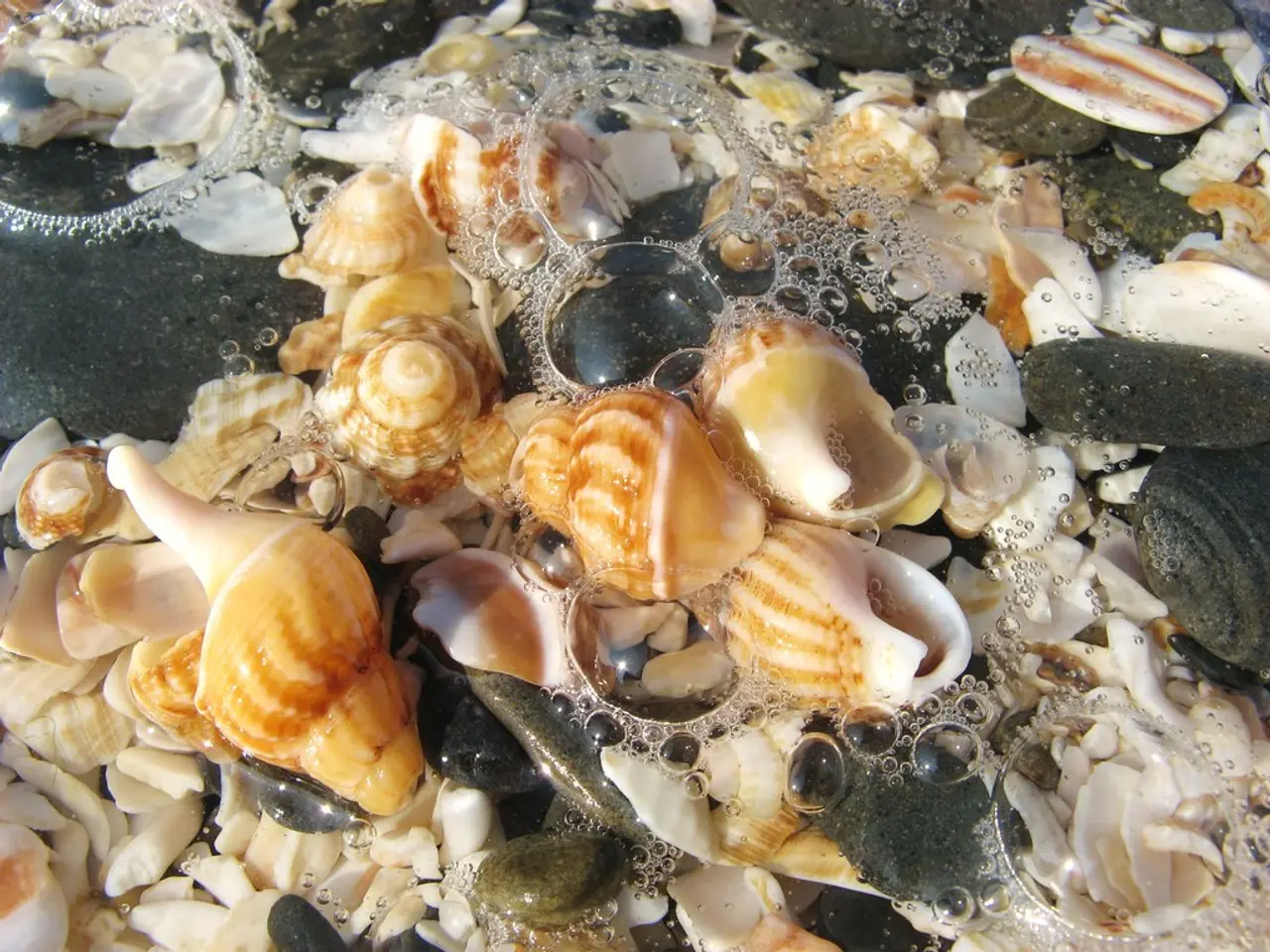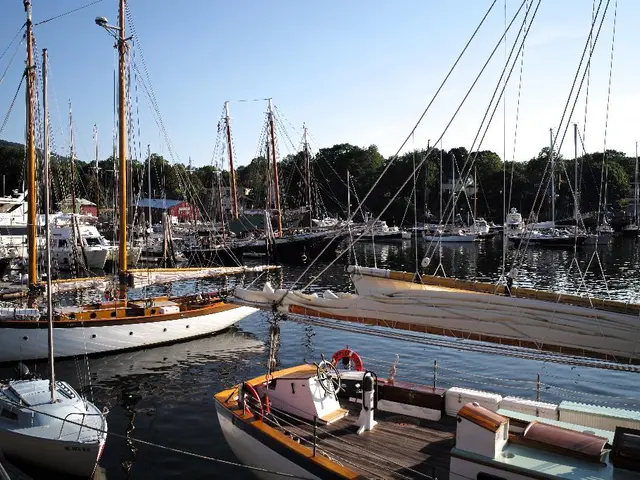Atlantic Nuclear Waste Barrels Partially Damaged During Expedition - Atlantic Nuclear Waste Barrels Partially Damaged Based on Expedition Findings
In the depths of the North Atlantic, an international research team is currently conducting a comprehensive study on the state of nuclear waste drums discarded there decades ago. The project, known as the Nuclear Ocean Dump Site Survey Monitoring (NODSSUM), aims to map and assess these submerged barrels, which were dumped between the 1950s and the 1990s by European countries such as the United Kingdom, Belgium, and France.
The research, led by the French National Centre for Scientific Research (CNRS), has already located more than 1,000 barrels in the Northeast Atlantic. These barrels, containing low- and intermediate-level radioactive materials, were encased in bitumen or cement to withstand deep-sea pressures. However, the precise locations, grouping, and integrity of the barrels remain largely uncertain, and the survey is ongoing to clarify these details.
The impact on the local ecosystem is another significant concern. Although the barrels were designed to contain the waste securely, decades under extreme ocean conditions could have compromised some containers, potentially releasing contaminants. The scientific mission explicitly aims to evaluate the long-term environmental effects of these submerged barrels on marine life.
During their mission, the research team used a diving robot named Ulyx, equipped with a camera for 3D images and a sonar system for detecting objects with sound. They spent four weeks on the ship "L'Atalante" in the Western European Basin of the Atlantic, analysing about 50 photographed drums and taking samples of water, soil, and animals.
Preliminary results indicate that some of the nuclear waste drums have leaked unknown material, likely the binding agent bitumen. The condition of the containers varied, with some intact and others deformed or torn open. However, the exact nature and extent of the material leaked from the damaged drums is currently unknown.
Interestingly, the international team did not detect elevated radiation levels during their mission. This suggests that the radioactivity may have been escaping from the containers for some time, according to nuclear physicist Patrick Chardon. A researcher from the Thünen Institute for Fisheries Ecology in Bremerhaven was on board, and the team will continue to monitor the potential effects on marine species and habitats in the vicinity.
Project leader Chardon estimates that the radioactivity of most nuclear waste should have virtually disappeared after about 300 to 400 years. However, the fine radiation measurements are pending, and the ongoing research will provide clearer insights into the barrels' current condition and their ecological consequences in the coming months.
The NODSSUM project located approximately 3,350 nuclear waste drums over an area of 163 square kilometers in the North Atlantic. This ongoing international research will undoubtedly contribute significantly to our understanding of the long-term impact of nuclear waste disposal in the ocean.
References: [1] CNRS (2022). Nuclear waste drums in the North Atlantic: an ongoing investigation. Retrieved from https://www.cnrs.fr/en/nuclear-waste-drums-north-atlantic-ongoing-investigation [2] BBC News (2025). Nuclear waste drums found in North Atlantic. Retrieved from https://www.bbc.co.uk/news/science-environment-56837898 [3] Ifremer (2025). NODSSUM: mapping and assessing nuclear waste drums in the North Atlantic. Retrieved from https://www.ifremer.fr/en/nodssum-mapping-and-assessing-nuclear-waste-drums-north-atlantic [4] ASNR (2025). NODSSUM: ensuring nuclear safety in the North Atlantic. Retrieved from https://www.asnr.fr/en/nodssum-ensuring-nuclear-safety-north-atlantic [5] Ulyx (2025). Diving robot Ulyx: exploring the depths of the North Atlantic. Retrieved from https://www.ulyx.fr/en/diving-robot-ulyx-exploring-depths-north-atlantic
- To mitigate potential risks, the research team has proposed a community policy to inform and educate local fishing communities about the NODSSUM project and the possible effects on their health and wellness, as well as guidelines for safe fishing practices.
- In alignment with global employment policies, the international team includes professionals from various scientific disciplines, such as medical-conditions, health-and-wellness, environmental-science, and climate-change, to ensure comprehensive and interdisciplinary research.
- Furthermore, the governments involved in the NODSSUM project are developing and implementing employment policies to support the research and monitoring efforts, focusing on attracting and retaining skilled professionals in the field of oceanographic sciences and nuclear technology.




